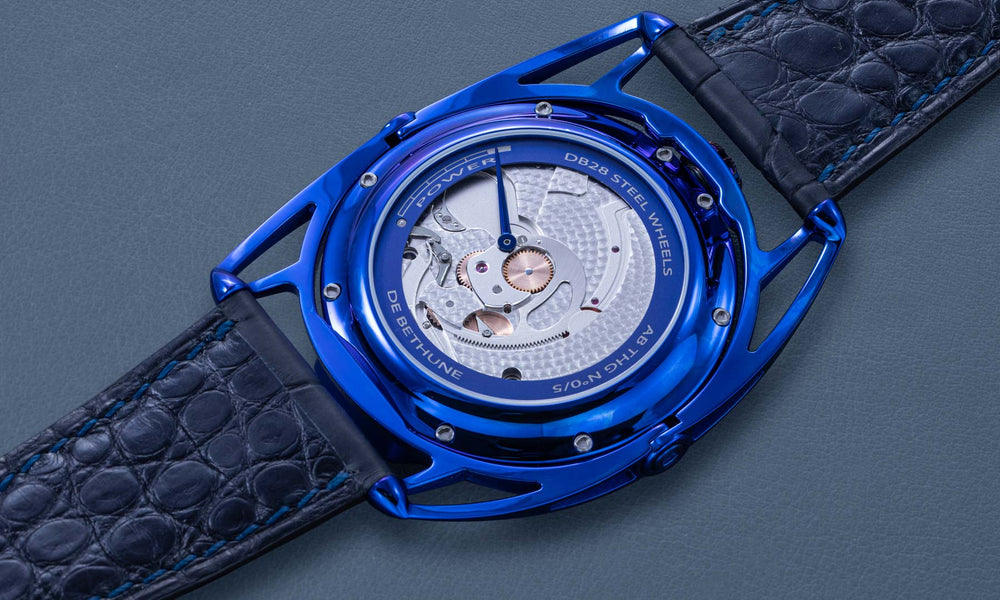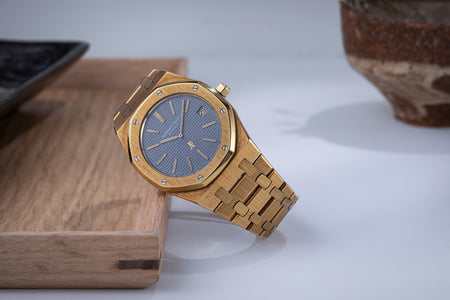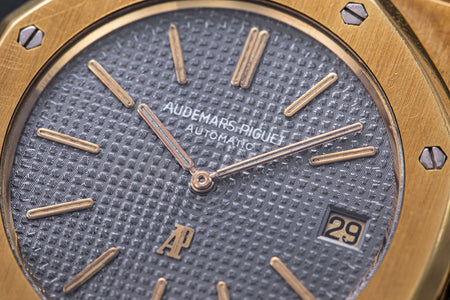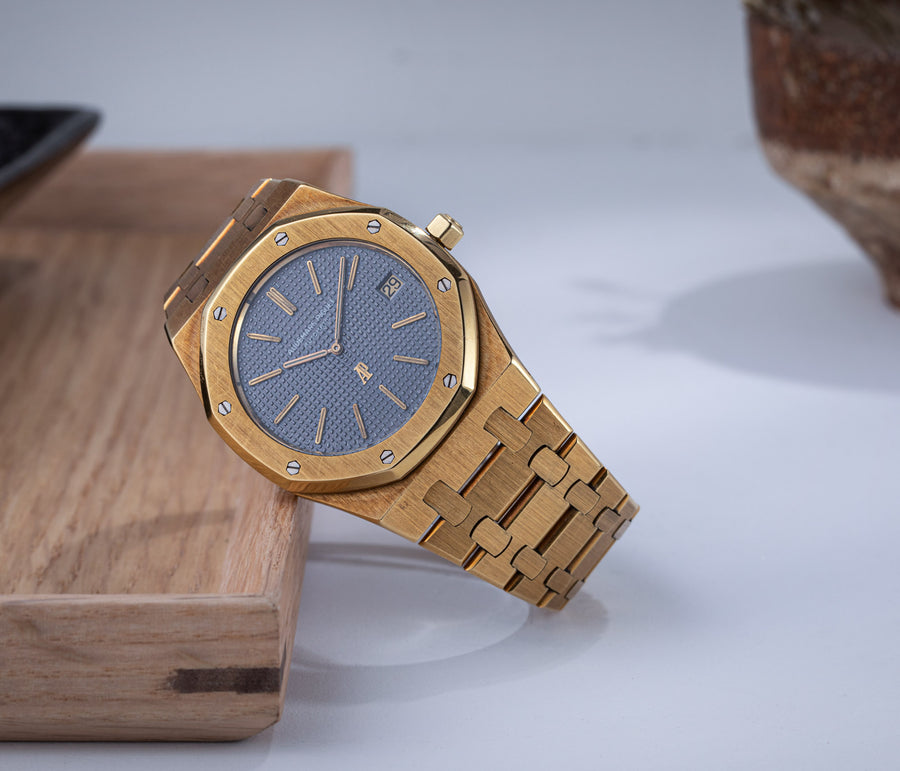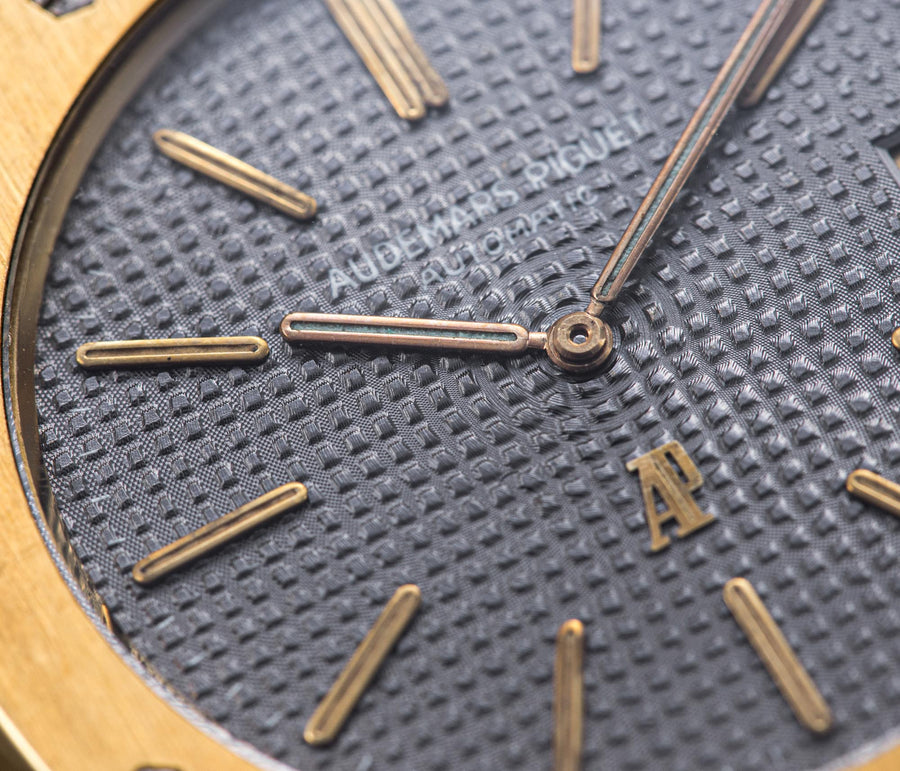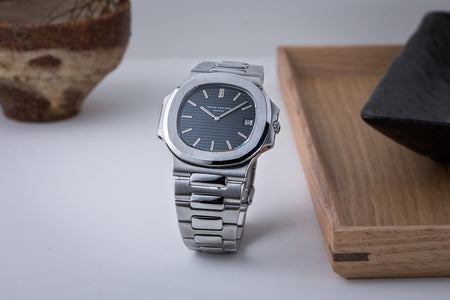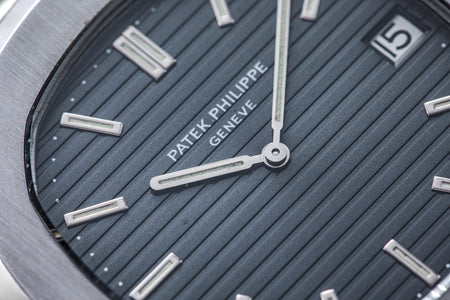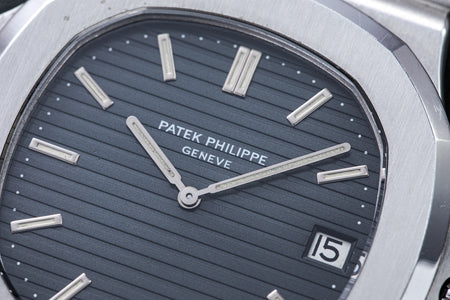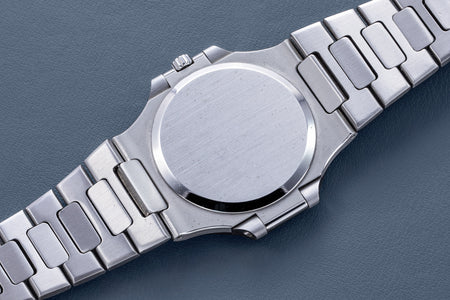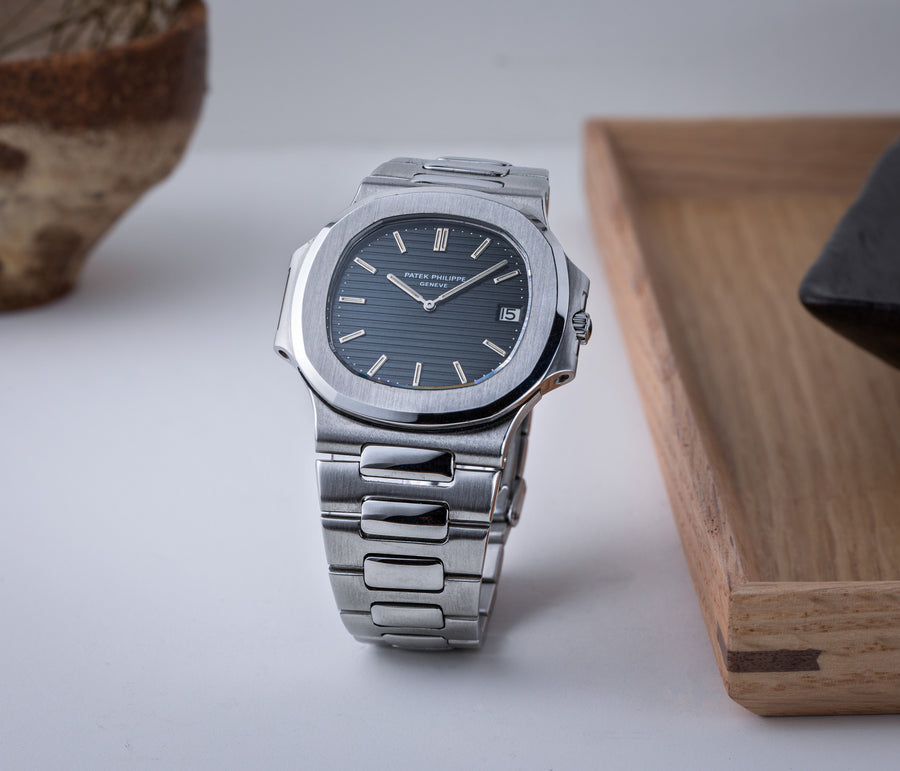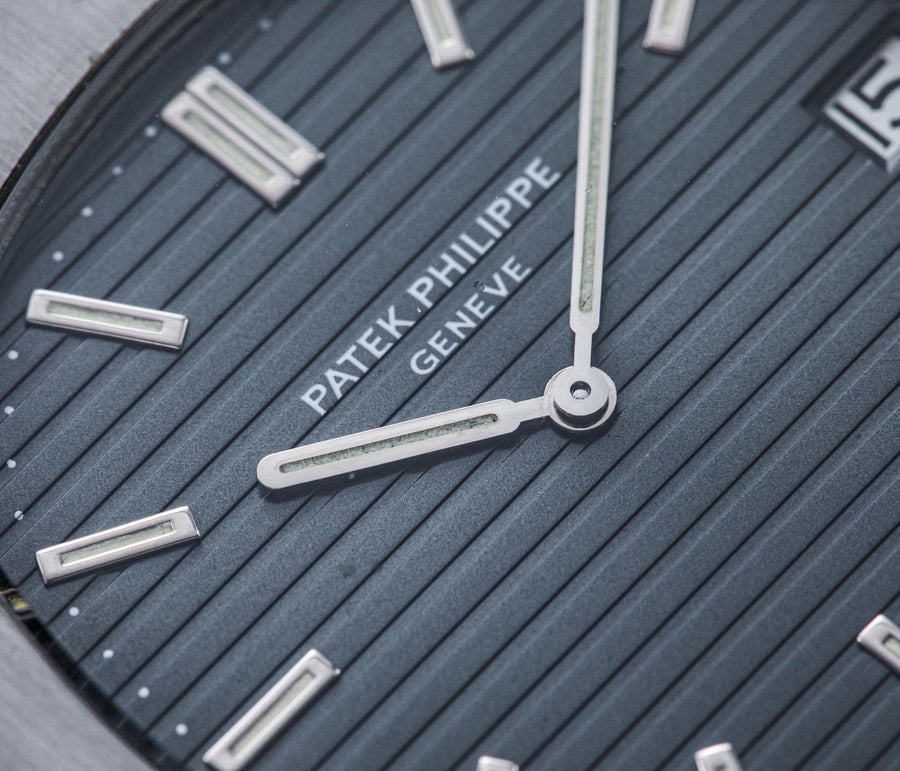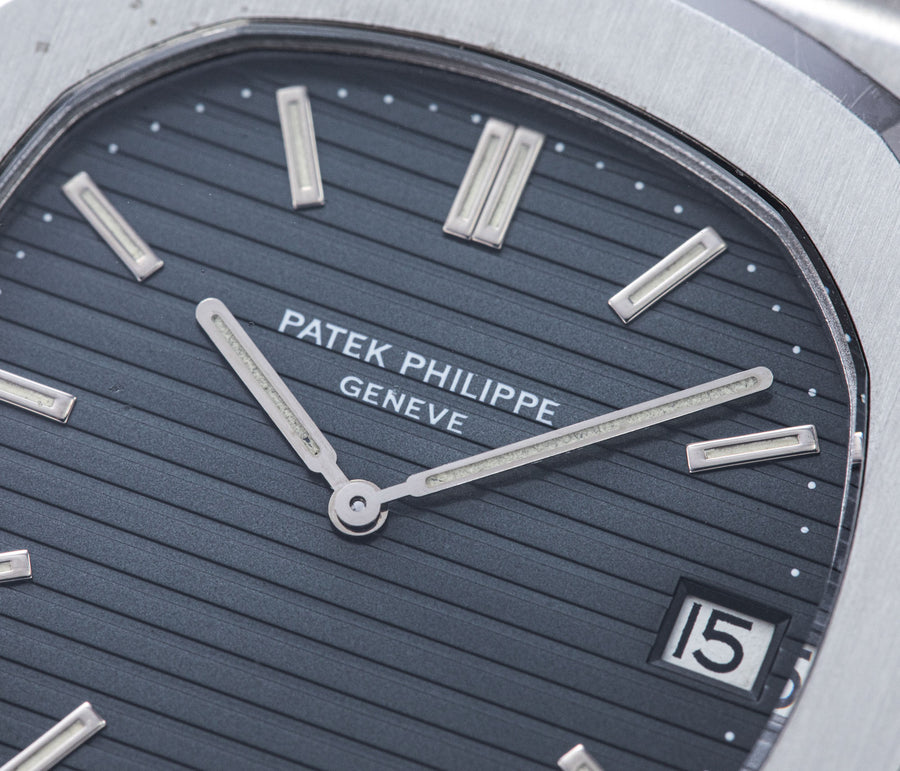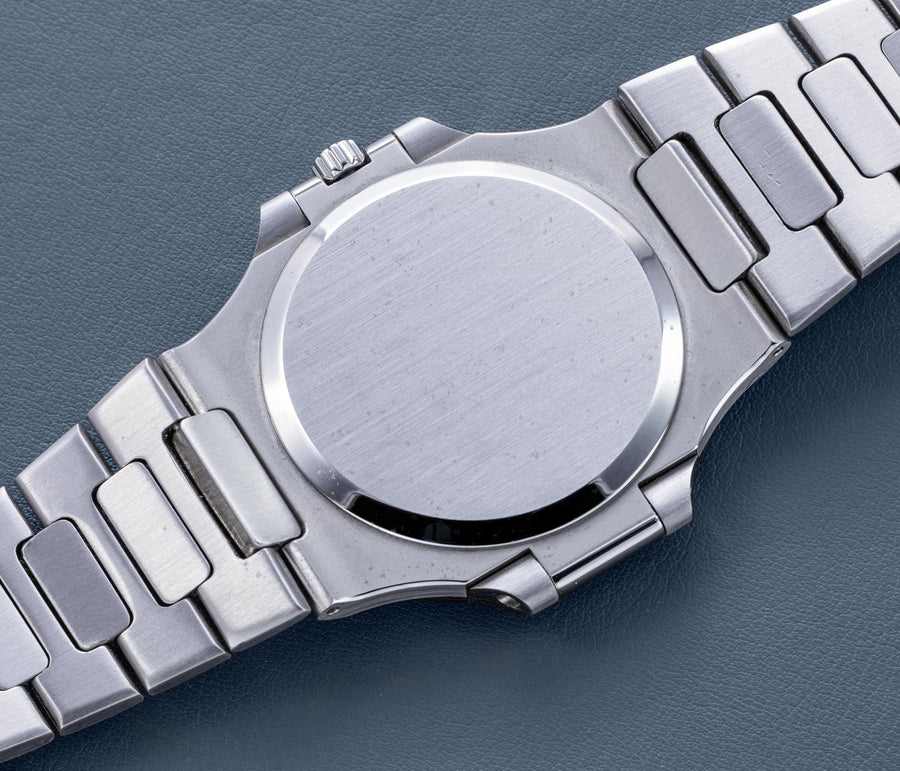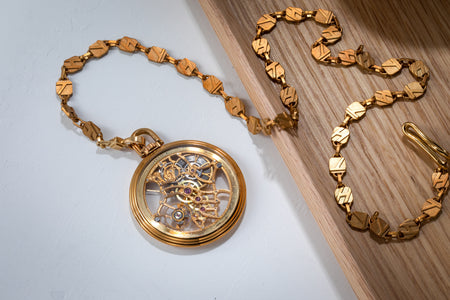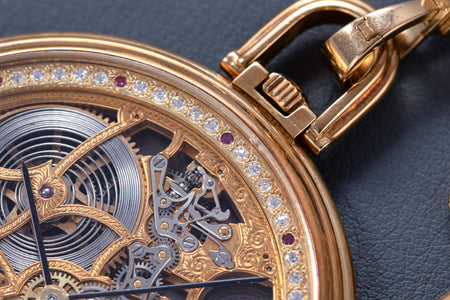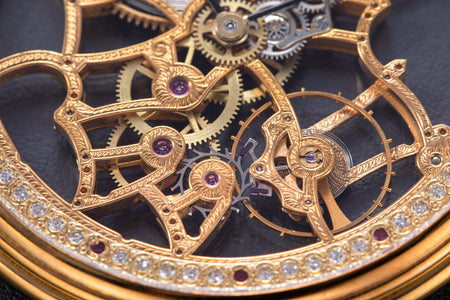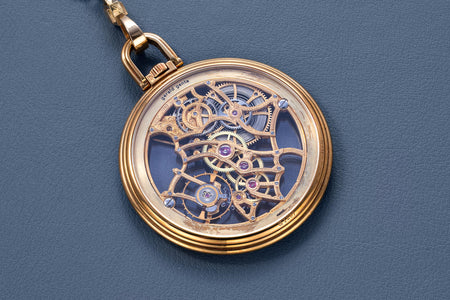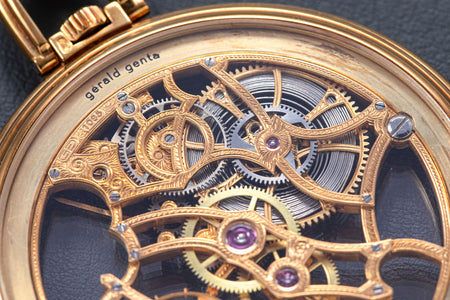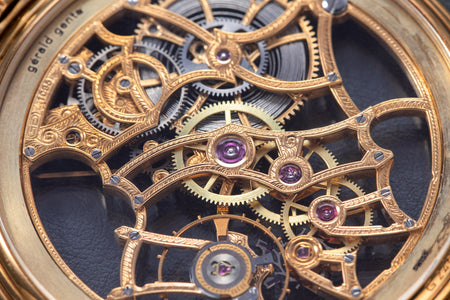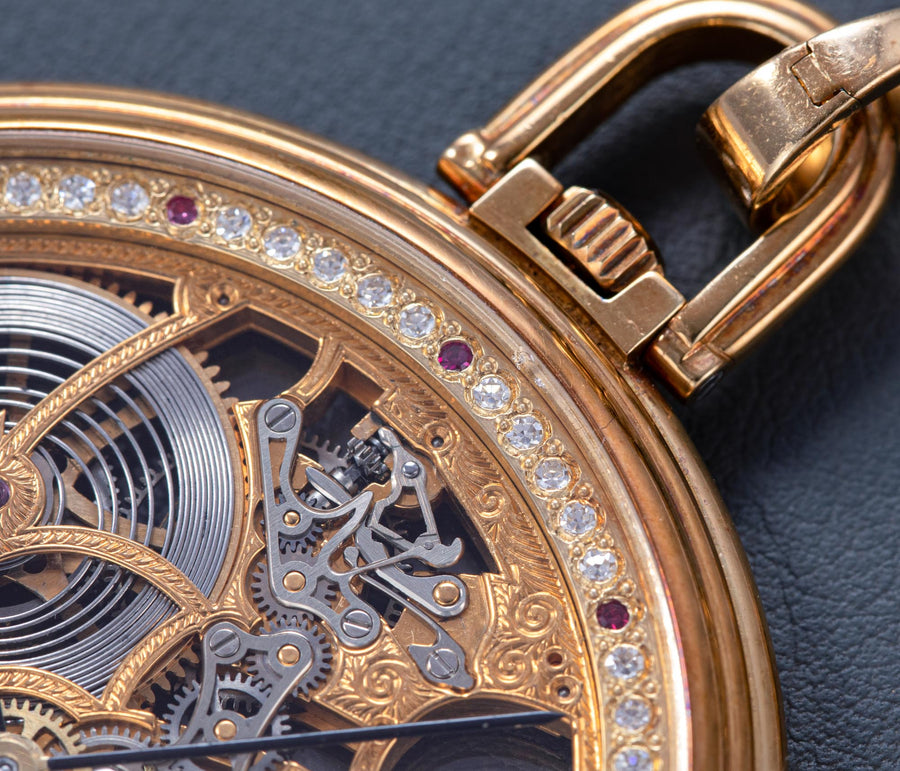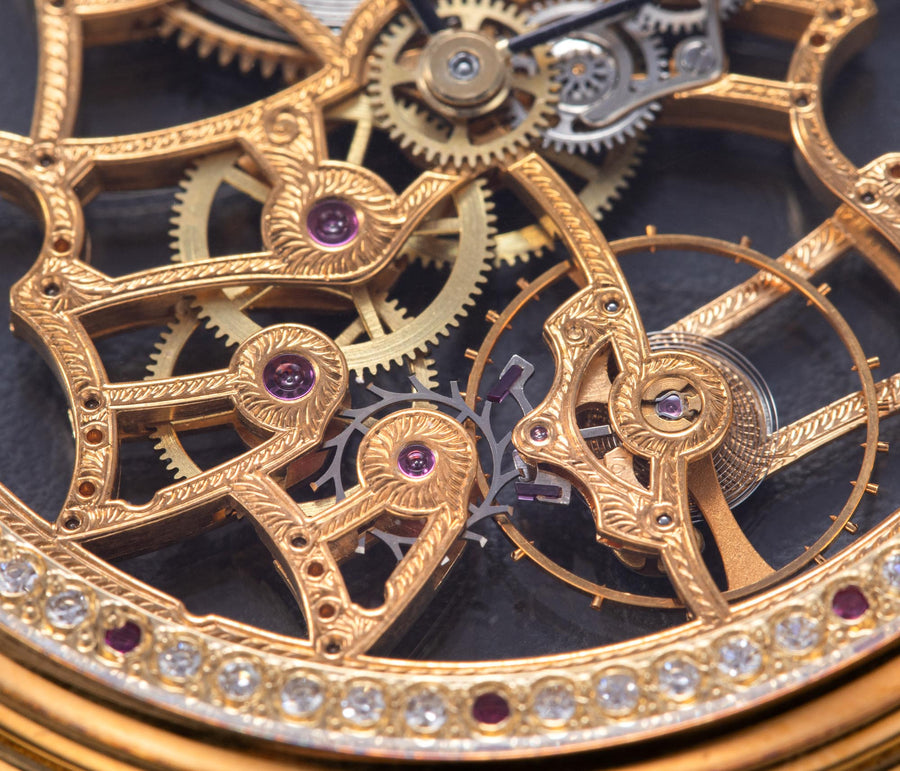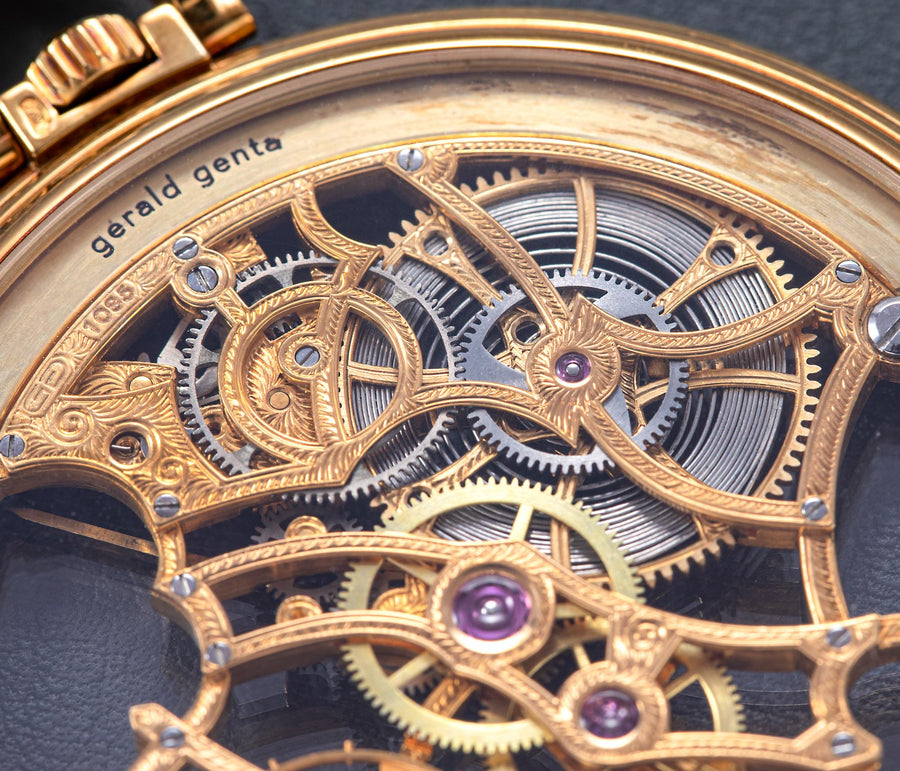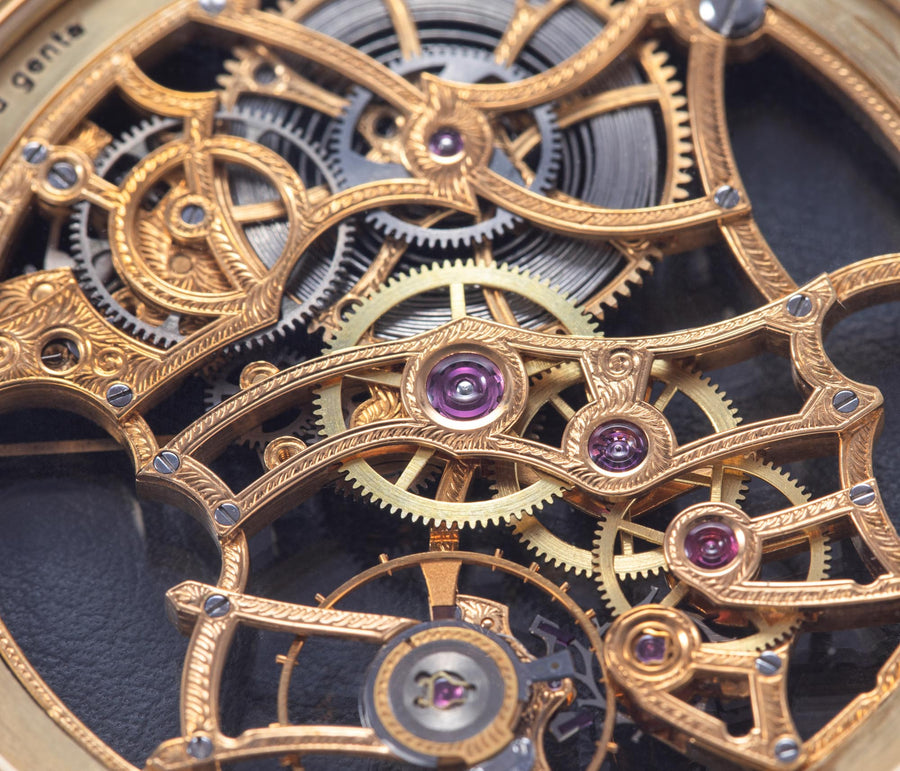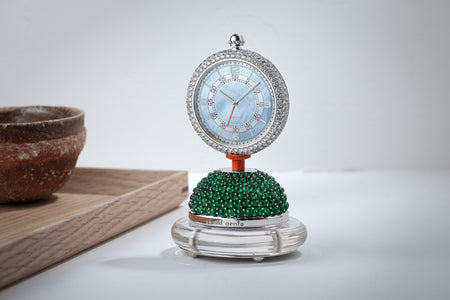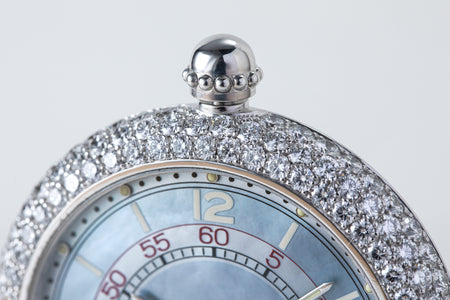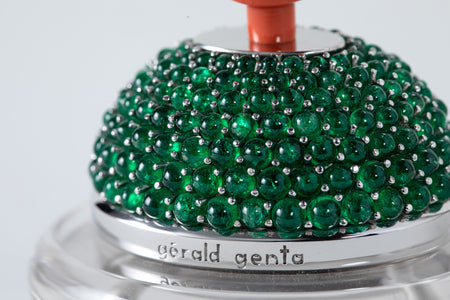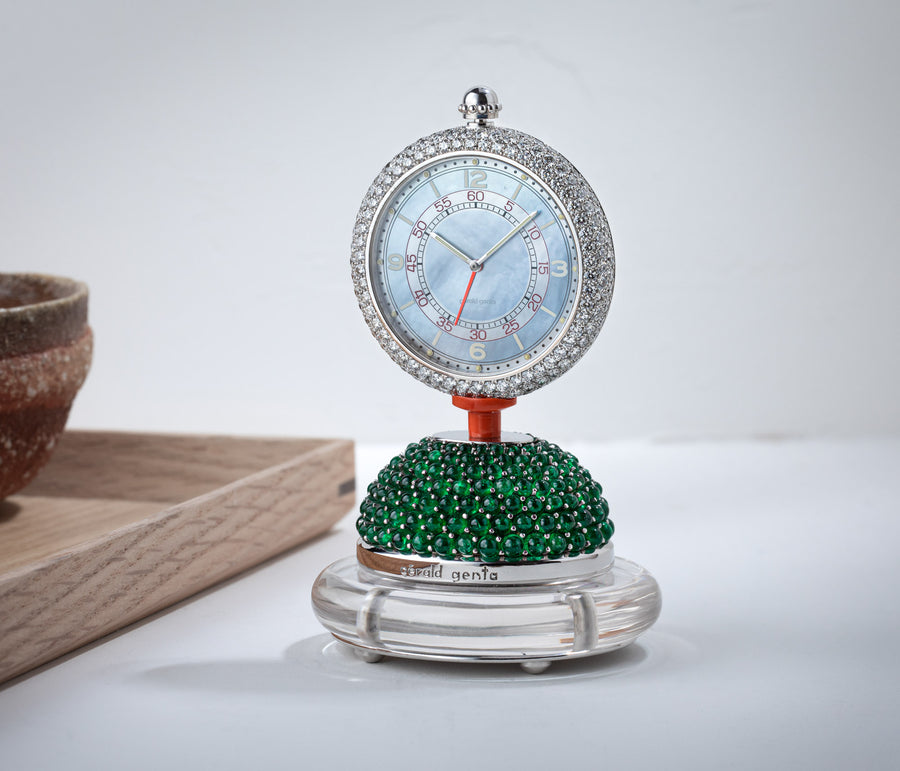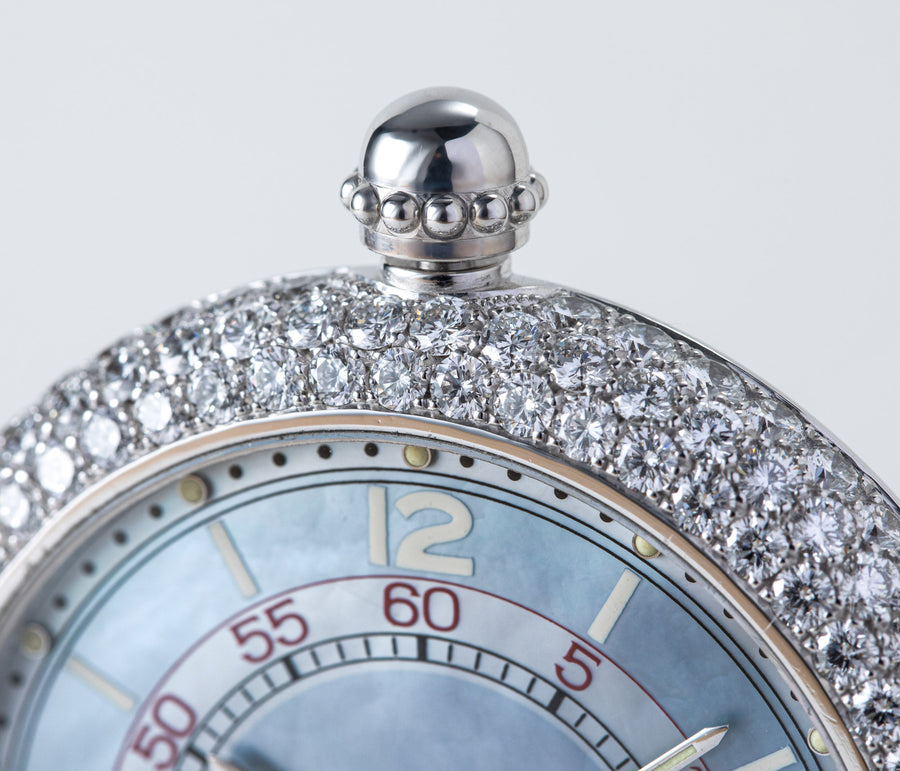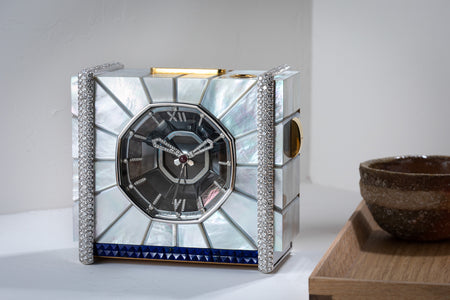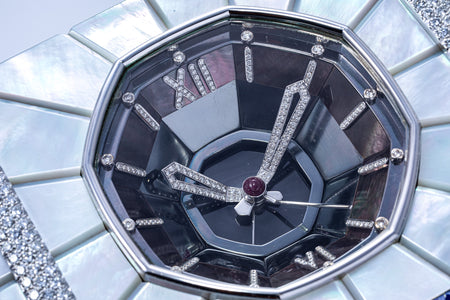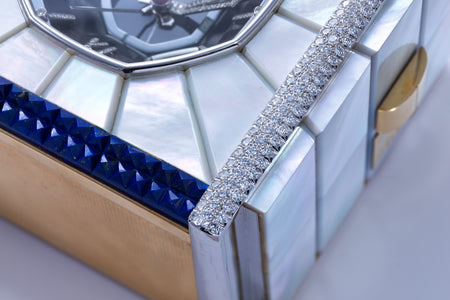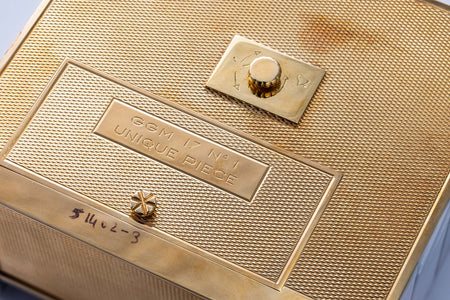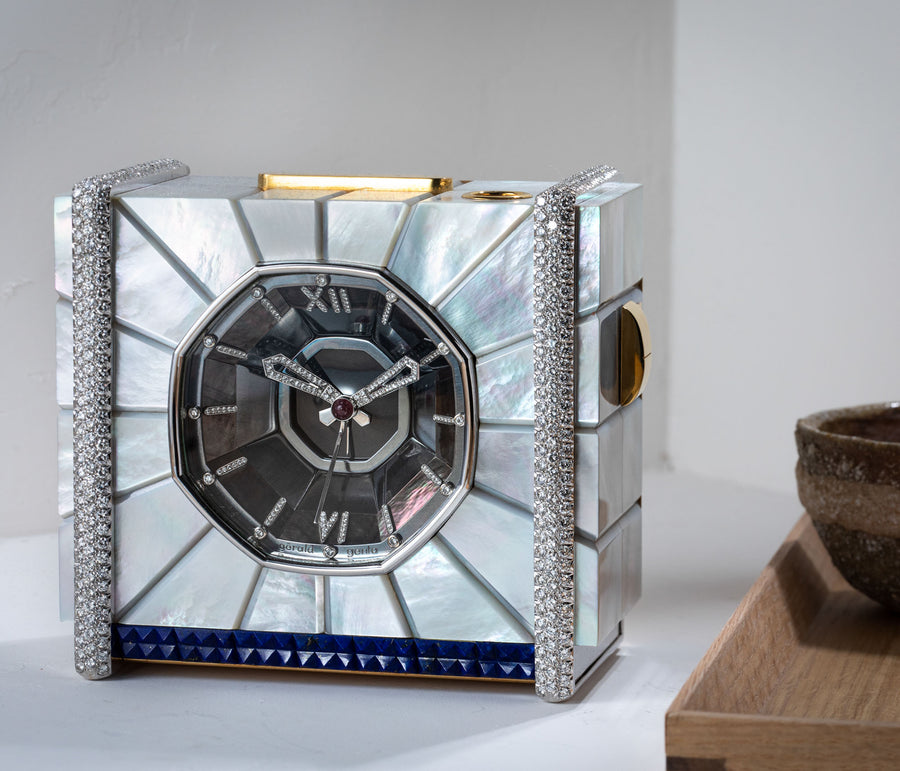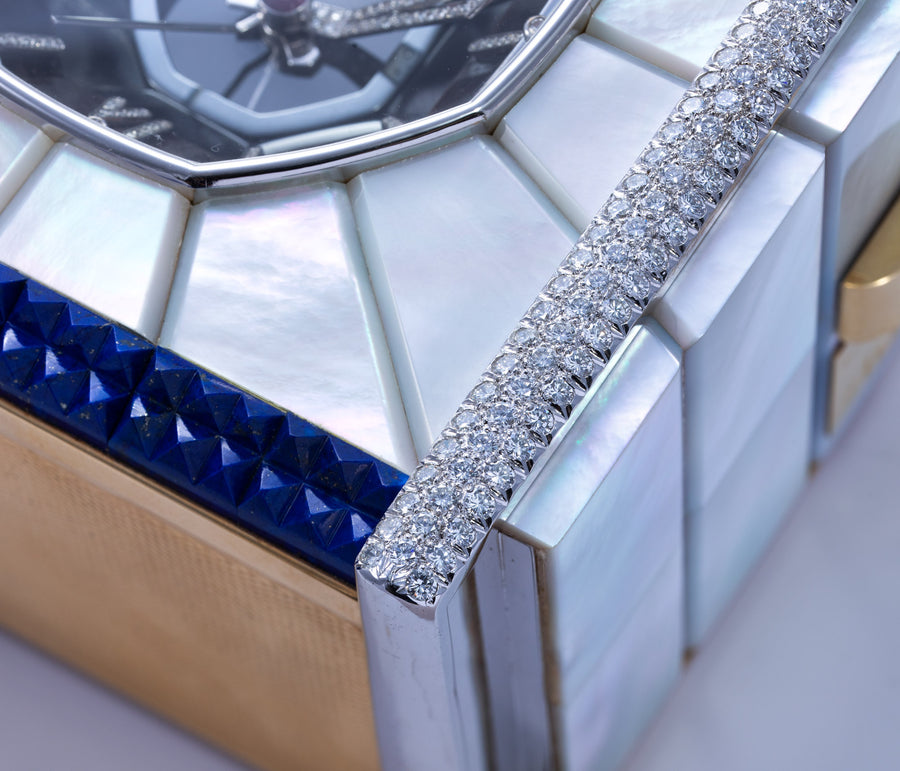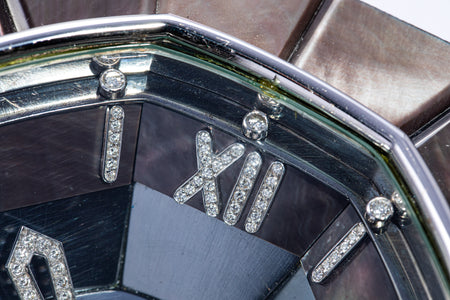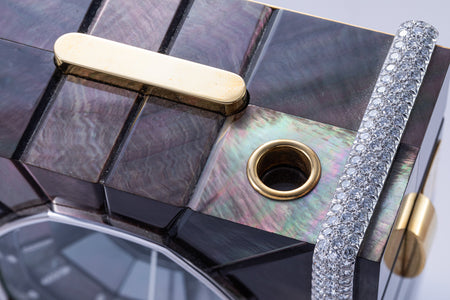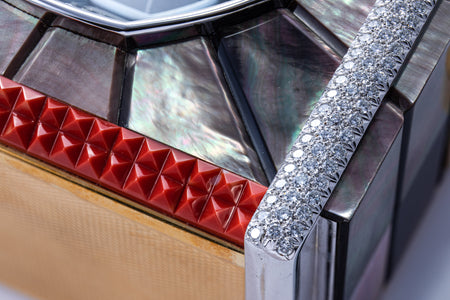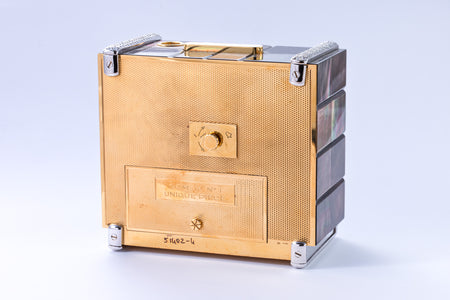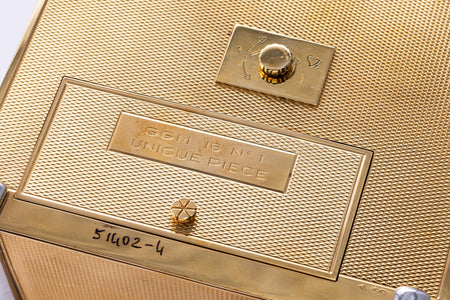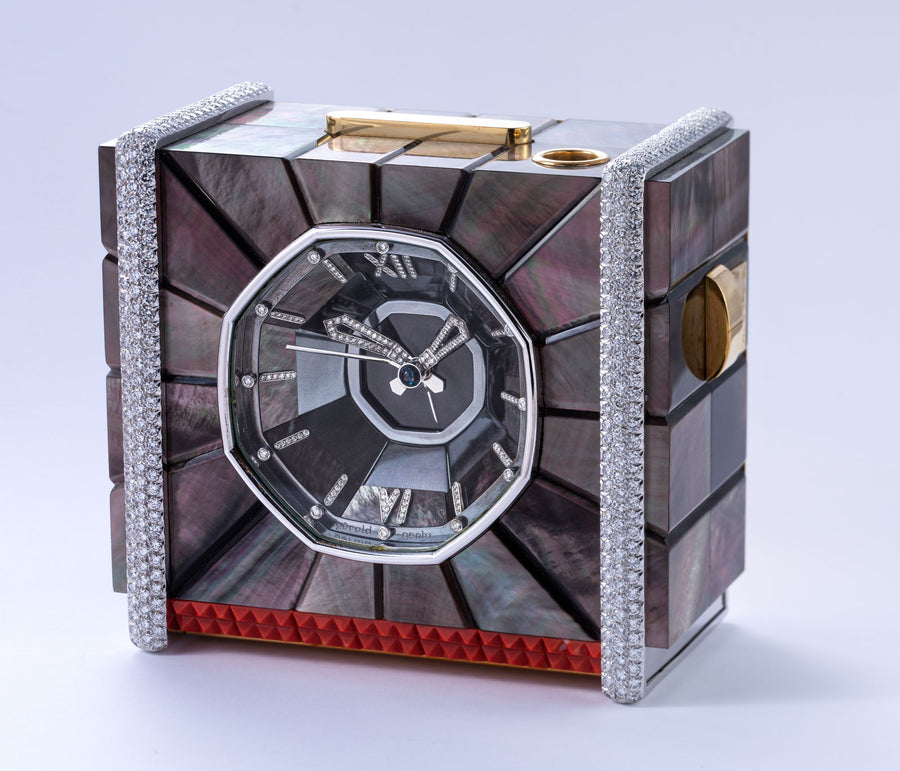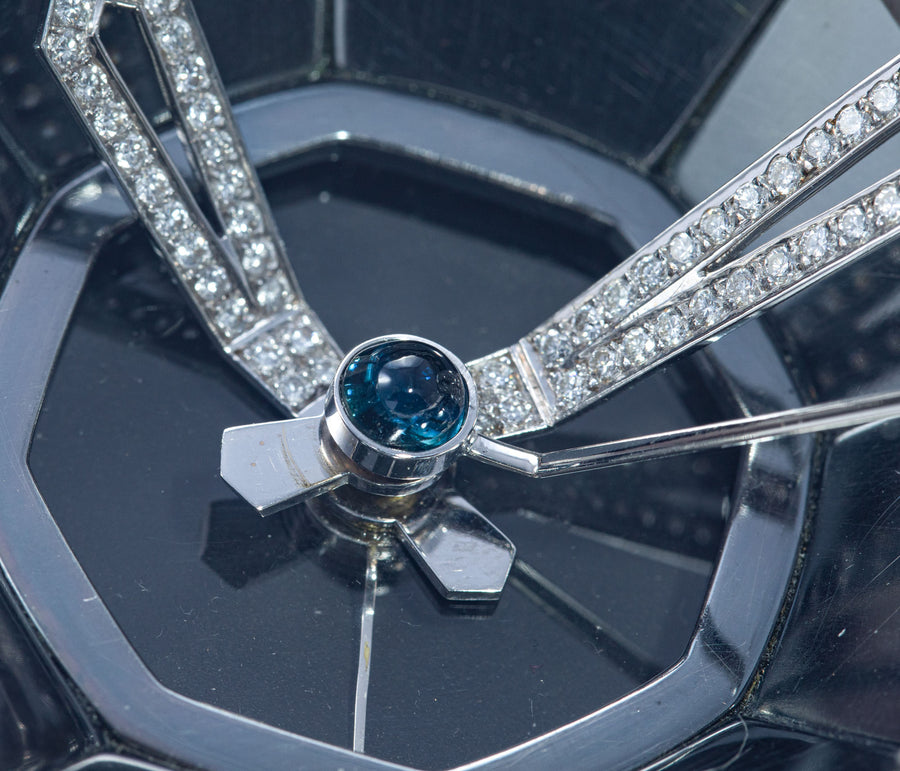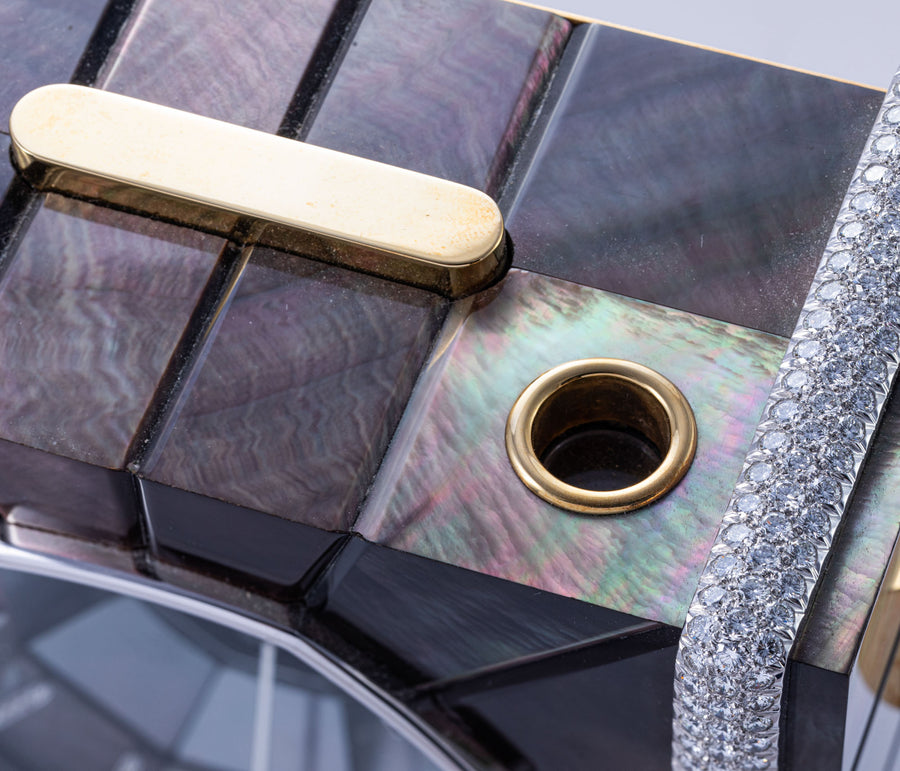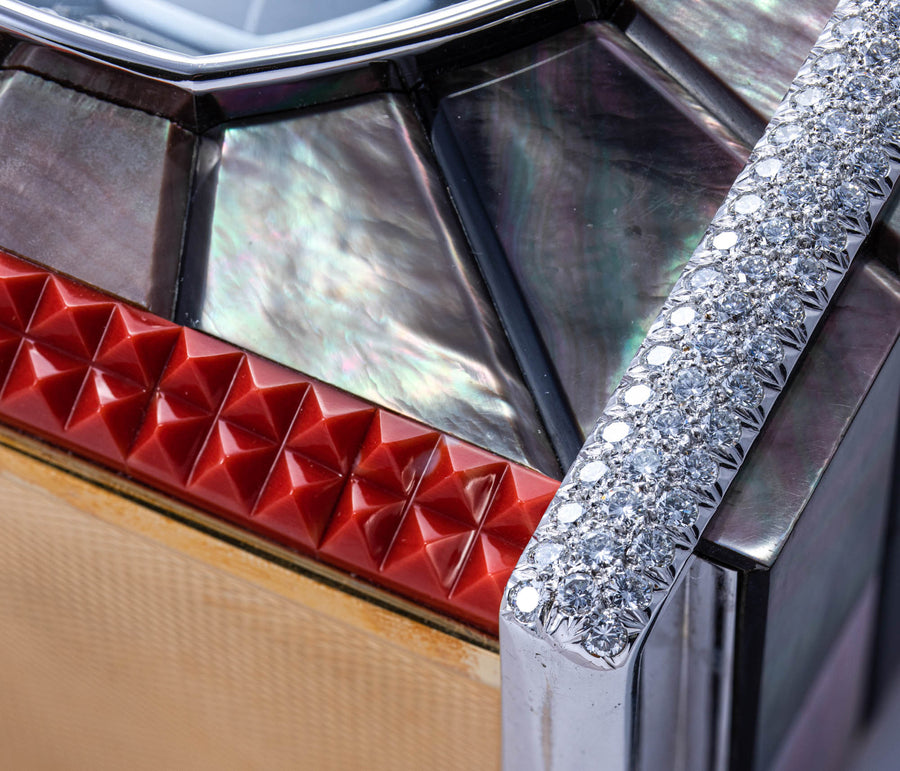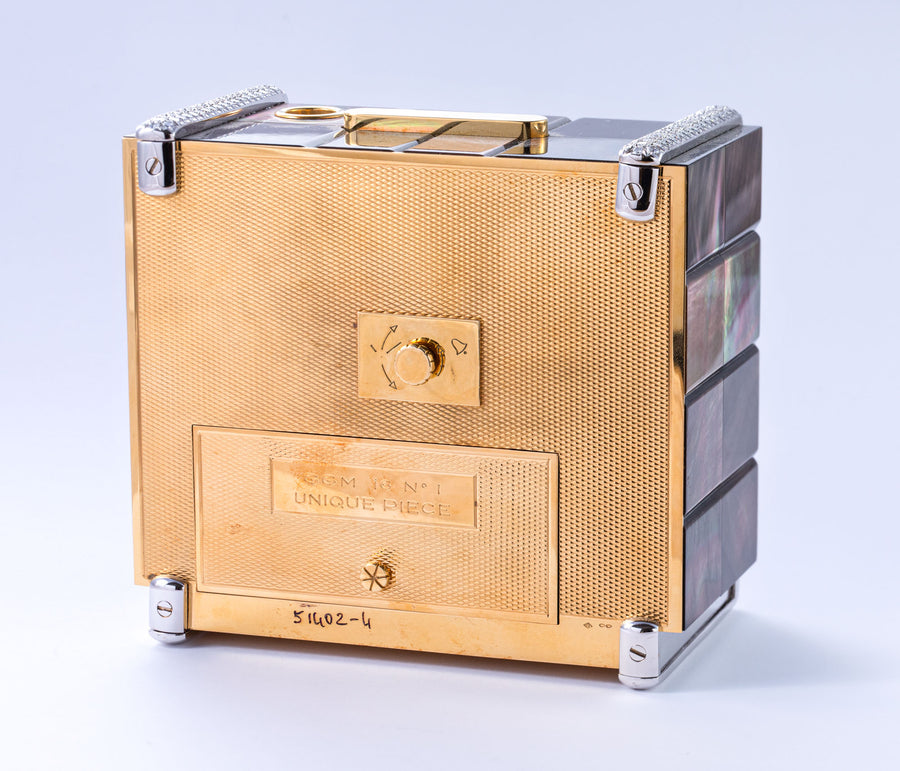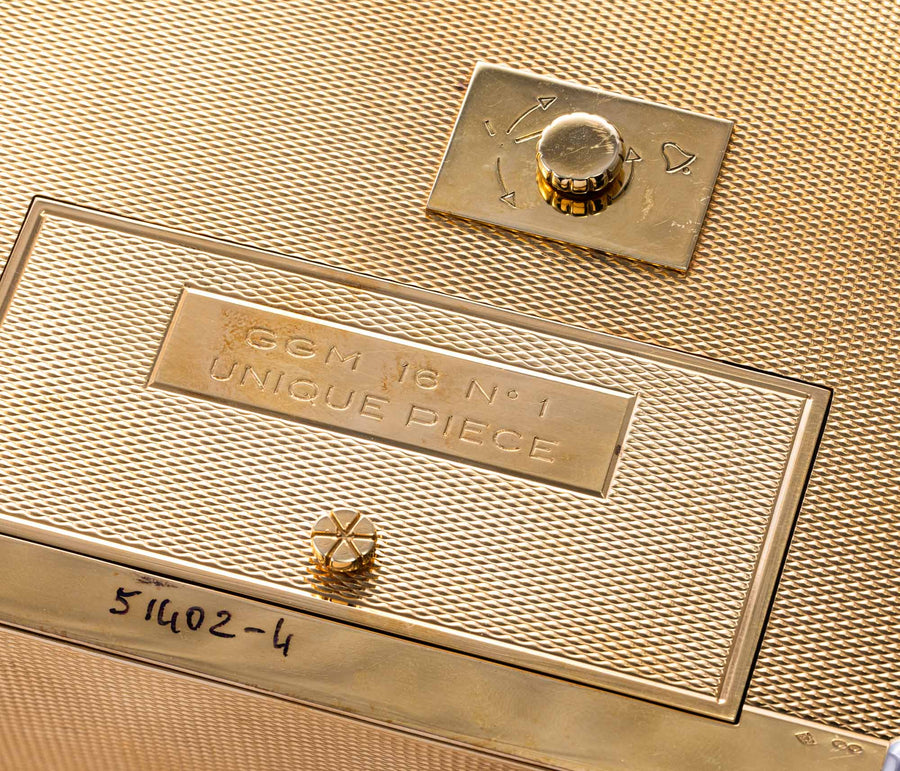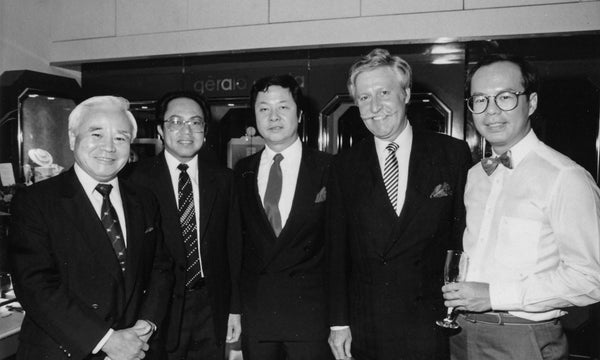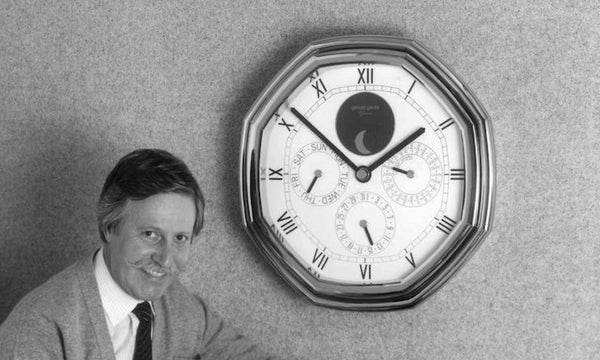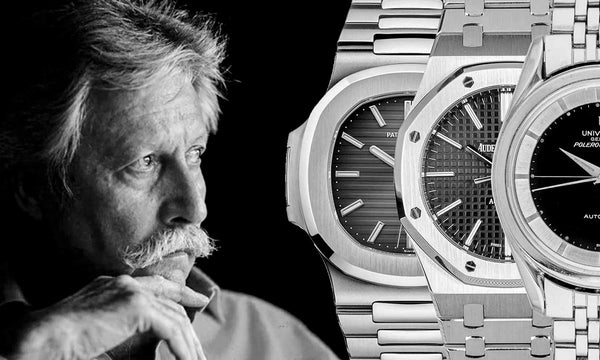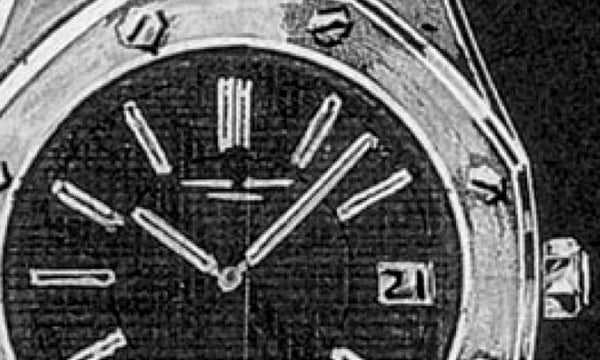"For me, watches are the antithesis of liberty. I am an artist, a painter, I hate having to adhere to the constraints of time. It irritates me."
An exhibition surveying the major influences of the late 20th century watch industry cannot be complete without the mention of Gerald Genta (1931-2011). Despite being neither a watchmaker nor an entrepreneur strictly speaking (though he did have a highly competent business partner in his wife Evelyn Genta), Genta, till today remains the most important and prolific watch designer in history. Responsible for some 100,000 watch designs by Madam Genta’s account, Genta long considered himself first and foremost an artist who designed watches.
His style, and successes, were truly diverse. His early works were exemplified by the Universal Geneve Polerouter and Omega Constellation, both typical gentleman’s watches of the 1950s, but with distinctively detailed chapter rings and hour markers.
But the watches that have come to define the Genta name were created during the quartz crisis, starting with the Royal Oak, which he famously designed overnight in response to a request from the then-chief executive of Audemars Piguet, Georges Golay. With a one-piece case inspired by a diving helmet, the Royal Oak design was completed in 1970, and then launched in 1972. Four years later, Genta penned the Nautilus for Patek Philippe – reputedly on a napkin while in a restaurant – this time taking inspiration from a ship’s porthole with its hinge and locking mechanism on each side.
1972
Audemars Piguet
Royal Oak 5402
Arguably the most famous Gerald Genta design, the Royal Oak was modelled on a scaphander helmet, the bulbous brass helmets worn by divers in the 19th and early-20th centuries. Innovative for making functional elements conceived for water resistance into design features, the Royal Oak was defined by an octagonal bezel, which was secured to a one piece case with screws on the back and visible, octagonal nuts on the bezel. As integral to the Royal Oak design was its bracelet, which flowed seamlessly into the case.
1977
Patek Philippe
Nautilus 3700
Similarly innovative was the Nautilus for Patek Philippe, which also relies on a bezel secured to a one-piece case, but this time with lateral screws that go into the “ears” on the case flanks. Here Genta was inspired by a ship’s porthole with its hinge and lock, elements that he converted into the functional “ears” of the Nautilus case. Like the Royal Oak, the Nautilus was conceived with an integrated bracelet, once again making the bracelet an essential part of the whole.
The decade also saw the launch of the Fantasy collection created under license from the Walt Disney Company. Bearing the American studio’s most famous characters, Mickey Mouse, Minnie and Donald Duck, the Fantasy collection were whimsical in design but priced as serious timepieces, many powered by complicated, mechanical movements.
Developed in-house at his 3 workshops in Le Brassus and Geneva – his company employed some 70 people by the 1990s – the brand’s movements were startingly diverse and complex in a period when high-end watchmaking was only just making its comeback after the quartz crisis.
1993
Gérald Genta
Skeleton Pocket Watch
Crafted and then gifted to Genta's close personal friend, this watch sat in the recesses of a safe untouched for the last 25 years. Accompanied by a letter congratulating the collector for his 50th birthday and their years of friendship.
In 1969, Genta had already established his own company to produce custom timekeepers, but his eponymous brand only took off in the early 1980s. Amongst Genta’s most faithful clients were the monarchs of Brunei, Oman, Saudi Arabia, and Spain. Genta had begun innovating with new materials for watchmaking purposes as early as 1984 when he unveiled the Gefica, a watch designed for big game hunters that had a matte, non-reflective bronze case as well as a compass integrated into its clasp.
The pinnacle of Genta’s watchmaking arrived in 1994, when the brand debuted the Grande Sonnerie, then the world’s most complicated – and most expensive – complicated wristwatch. The top-of-the-line versions of the model were powered by an automatic movement made up of over 1,000 parts, incorporating a grande et petite sonnerie carillon with Westminster chime on four hammers and gongs, tourbillon, perpetual calendar, and dual power reserve indicators.
That same year, Genta himself set up Gerald Charles, a new brand dedicated to realising some of his later designs, though Gerald Charles never enjoyed the success of Genta’s original brand in its heyday. Although Bulgari all but shuttered the Genta brand in the years after taking it over, it has since used several Genta designs as the foundations for its own watches, most notably the ultra-thin Octo Finissimo. And in 2019, Bulgari revealed the Gerald Genta 50th Anniversary Arena Bi-Retro in a tribute to the designer.
Learn More
DISCOVER MORE
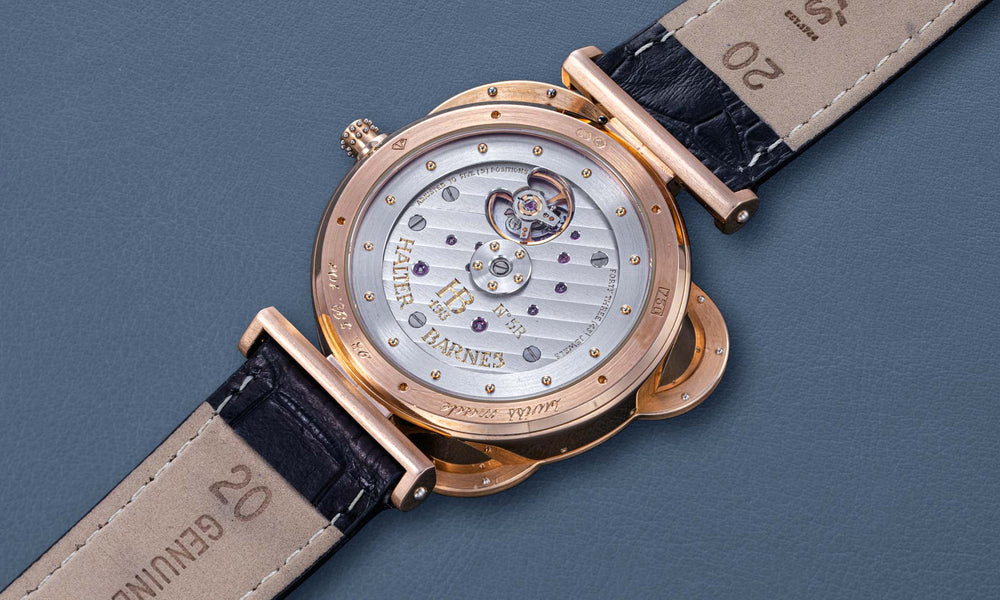
The Time Travellers
HALTER & BARNES
Enter Room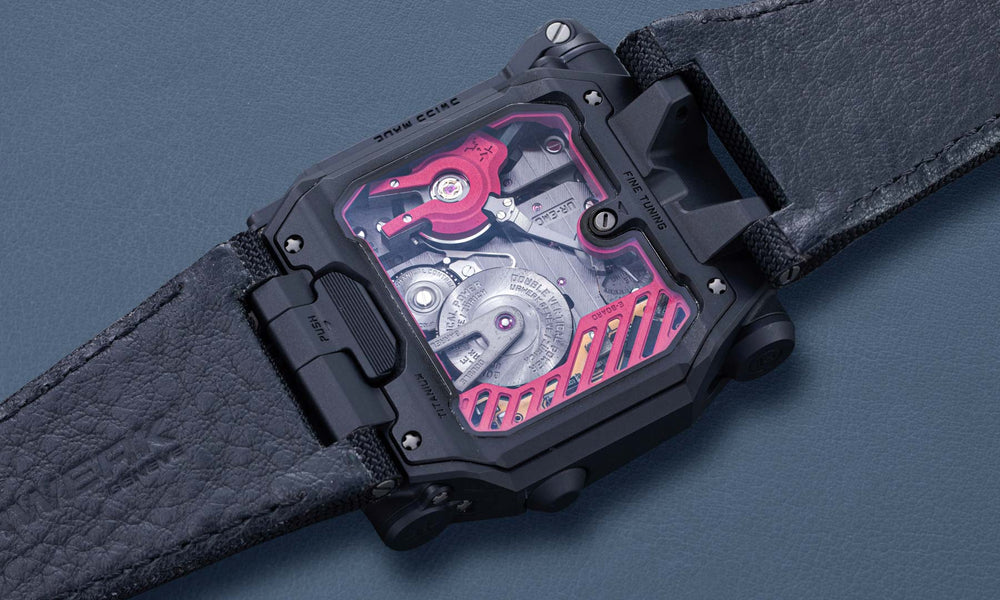
The Blade Runners
BAUMGARTNER & FREI
ENTER ROOM